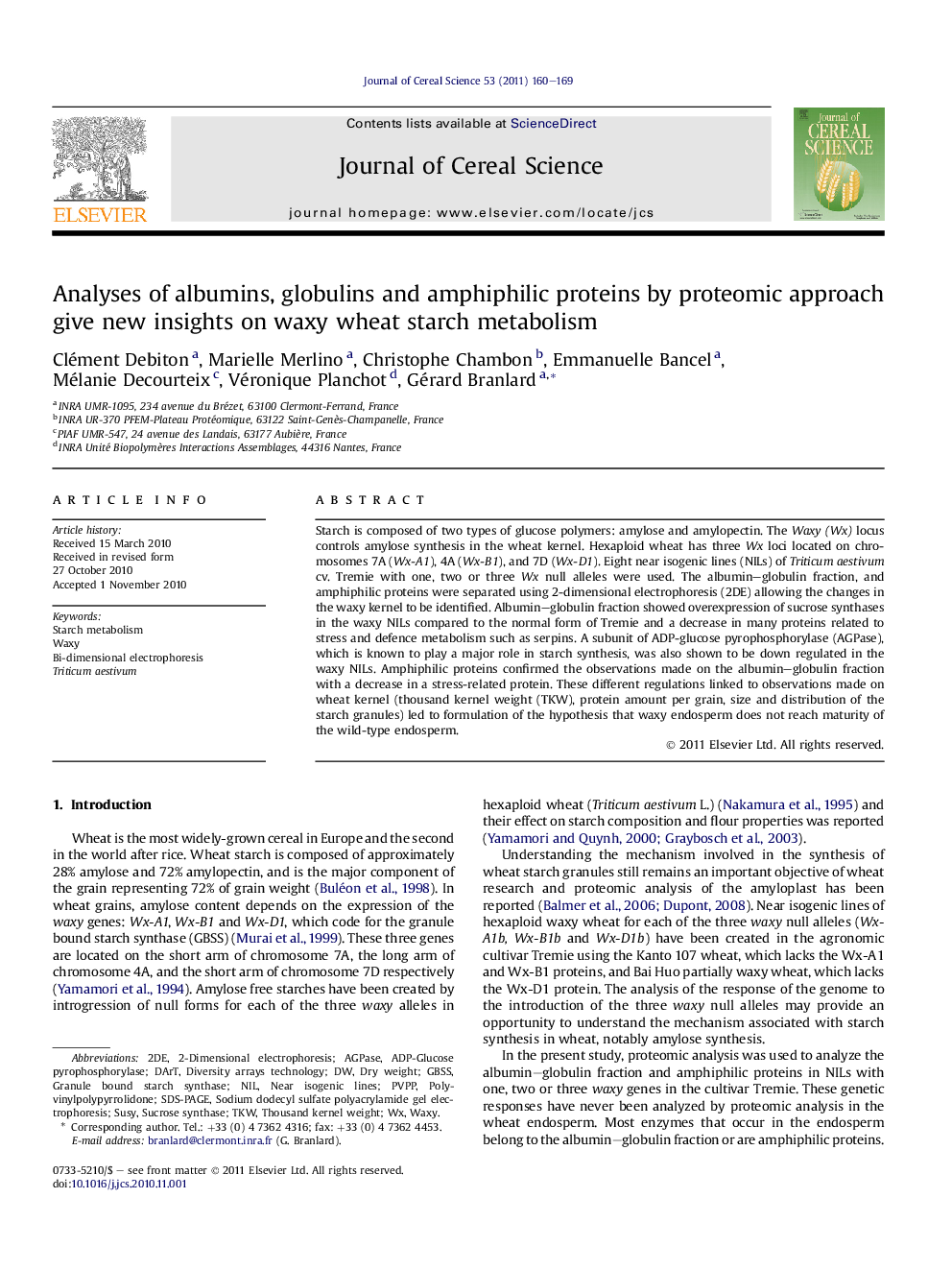| Article ID | Journal | Published Year | Pages | File Type |
|---|---|---|---|---|
| 6378263 | Journal of Cereal Science | 2011 | 10 Pages |
Abstract
Starch is composed of two types of glucose polymers: amylose and amylopectin. The Waxy (Wx) locus controls amylose synthesis in the wheat kernel. Hexaploid wheat has three Wx loci located on chromosomes 7A (Wx-A1), 4A (Wx-B1), and 7D (Wx-D1). Eight near isogenic lines (NILs) of Triticum aestivum cv. Tremie with one, two or three Wx null alleles were used. The albumin-globulin fraction, and amphiphilic proteins were separated using 2-dimensional electrophoresis (2DE) allowing the changes in the waxy kernel to be identified. Albumin-globulin fraction showed overexpression of sucrose synthases in the waxy NILs compared to the normal form of Tremie and a decrease in many proteins related to stress and defence metabolism such as serpins. A subunit of ADP-glucose pyrophosphorylase (AGPase), which is known to play a major role in starch synthesis, was also shown to be down regulated in the waxy NILs. Amphiphilic proteins confirmed the observations made on the albumin-globulin fraction with a decrease in a stress-related protein. These different regulations linked to observations made on wheat kernel (thousand kernel weight (TKW), protein amount per grain, size and distribution of the starch granules) led to formulation of the hypothesis that waxy endosperm does not reach maturity of the wild-type endosperm.
Keywords
NILADP-glucose pyrophosphorylaseDiversity Arrays TechnologyPVPPDArTTKWGBSSAGPase2DE2-dimensional electrophoresisSDS-PAGESodium dodecyl sulfate polyacrylamide gel electrophoresisSucrose synthaseSuSyStarch metabolismnear isogenic linesthousand kernel weightWaxydry weightpolyvinylpolypyrrolidonegranule bound starch synthaseTriticum aestivum
Related Topics
Life Sciences
Agricultural and Biological Sciences
Agronomy and Crop Science
Authors
Clément Debiton, Marielle Merlino, Christophe Chambon, Emmanuelle Bancel, Mélanie Decourteix, Véronique Planchot, Gérard Branlard,
